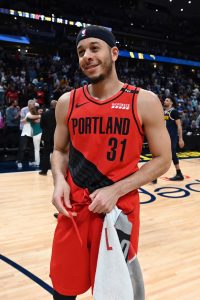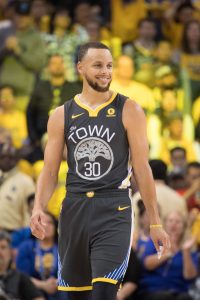In addition to receiving approximately $109MM in cap room and being allowed to surpass that threshold in order to sign players using Bird Rights or the minimum salary exception, each NBA team also receives a mid-level exception. The value of this exception varies depending on a club’s total team salary.
A team that goes under the cap to use its available cap room, for instance, receives only a modest form of the MLE known as the room exception. An over-the-cap team receives the full mid-level exception, unless that team is also over the tax line, in which case it gets a taxpayer version of the MLE that falls in between the full MLE and the room exception. We detailed the exact values of each form of mid-level exception earlier this offseason, but here’s a quick breakdown:
- Room exception: Can be used for contracts up to two years, with a starting salary worth up to $4,767,000.
- Taxpayer mid-level exception: Can be used for contracts up to three years, with a starting salary worth up to $5,718,000.
- Full mid-level exception: Can be used for contracts up to four years, with a starting salary worth up to $9,258,000.
Now that nearly all of the NBA’s teams have used up their cap space, it’s worth keeping an eye on which teams still have part or all of their mid-level exceptions available, which we’ll do in the space below. This list will be kept up to date throughout the 2019/20 league year.
Note: As of January 10, the value of the exceptions below began to prorate downward by 1/177th per day.
Here’s where things currently stand:
Mid-Level Exception:
Non-taxpayer: $9,258,000
Taxpayer: $5,718,000
Charlotte Hornets
- Used: $1,173,310 (Cody Martin); $898,310 (Caleb Martin); $898,310 (Jalen McDaniels)
Cleveland Cavaliers
- Used: $1,500,000 (Alfonzo McKinnie)
 ; $375,000 (Dean Wade); $250,000 (Jordan Bell)
; $375,000 (Dean Wade); $250,000 (Jordan Bell)
Dallas Mavericks
- Used: $7,461,380 (Seth Curry); $1,500,000 (Isaiah Roby)
Denver Nuggets
- Used: $898,310 (Vlatko Cancar); $183,115 (PJ Dozier)
Detroit Pistons
- Used: $7,317,074 (Derrick Rose); $483,115 (Justin Patton)
Golden State Warriors
- Used: $2,177,483 (Willie Cauley-Stein); $898,310 (Eric Paschall); $898,310 (Alen Smailagic); $842,327 (Damion Lee); $350,189 (Ky Bowman); $350,189 (Juan Toscano-Anderson); $187,782 (Mychal Mulder)
Houston Rockets
- Used: $3,540,000 (Danuel House); $903,111 (David Nwaba); $563,347 (Chris Clemons)
Memphis Grizzlies
- Used: $9,258,000 (Tyus Jones)
Miami Heat
- Used: $898,310 (KZ Okpala); $466,918 (Chris Silva)
Minnesota Timberwolves
- Used: $2,000,000 (Noah Vonleh); $1,400,000 (Jaylen Nowell); $898,310 (Naz Reid)
Oklahoma City Thunder
- Used: $1,620,564 (Justin Patton); $155,647 (Luguentz Dort)
Orlando Magic
- Used: $9,258,000 (Al-Farouq Aminu)
Portland Trail Blazers
- Used: $5,718,000 (Rodney Hood)
San Antonio Spurs
- Used: $5,500,000 (Trey Lyles)
Toronto Raptors
- Used: $4,000,000 (Patrick McCaw); $2,500,000 (Rondae Hollis-Jefferson); $898,310 (Matt Thomas); $898,310 (Dewan Hernandez)
Washington Wizards
- Used: $6,000,000 (Ish Smith); $1,000,000 (Admiral Schofield); $898,310 (Justin Robinson); $482,144 (Anzejs Pasecniks)
Room Exception:
Available: $4,767,000
Atlanta Hawks
- Used: $0

Boston Celtics
- Used: $4,767,000 (Enes Kanter)
Brooklyn Nets
- Used: $4,767,000 (Garrett Temple)
Chicago Bulls
- Used: $2,250,000 (Luke Kornet)
Indiana Pacers
- Used: $4,767,000 (Justin Holiday)
Los Angeles Clippers
- Used: $4,767,000 (JaMychal Green)
Los Angeles Lakers
- Used: $4,767,000 (Avery Bradley)
Milwaukee Bucks
- Used: $4,767,000 (Robin Lopez)
New Orleans Pelicans
- Used: $4,102,564 (Nicolo Melli)
New York Knicks
- Used: $4,000,000 (Reggie Bullock)
Philadelphia 76ers
- Used: $4,767,000 (Mike Scott)
Phoenix Suns
- Used: $4,767,000 (Frank Kaminsky)
Sacramento Kings
- Used: $4,767,000 (Richaun Holmes)
Utah Jazz
- Used: $4,767,000 (Ed Davis)
Salary information from Basketball Insiders, Early Bird Rights, and ESPN was used in the creation of this post. Photos courtesy of USA Today Sports Images.

